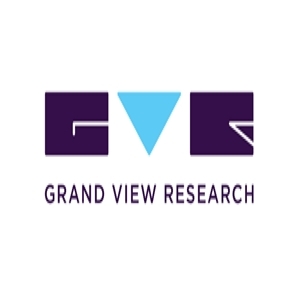Translation Services Procurement: A Roadmap to SuccessPosted by Manisha S on May 29th, 2024  The translation services category is expected to grow at a CAGR of 4% from 2023 to 2030. The two main sub-divisions include human-assisted translations and machine translations. Neural machine technology (NMT), which is still in the developing phase, is one of the major technologies in machine translation. The advent of neural machine translations has allowed companies to see the potential value this technology can offer-such as a better understanding of the nuances of languages, idiomatic expressions, and cultural references. NMT-based translation can reduce enterprise translation costs by more than 75%. Technology giants such as Google, Microsoft, Amazon, and Salesforce have started the implementation of NMT in their platforms. Multimodal and augmented reality translation is another upcoming technology trend. An example of how augmented reality (AR) technology can be used while traveling is to view translated information about landmarks and menus, and even have real-time conversations with locals through AR glasses or smartphone applications. AR translation is anticipated to revolutionize how consumers explore foreign places and interact with foreign cultures. The supplier landscape can be divided into local, regional, and global. Regional translation markets mostly operate out of translation agencies. Typical clients of these services include medium-sized organizations that seek to enhance their governance power and require a more robust and streamlined process that provides them with greater control over their operations. Asian, African, and Latin American economies are developing at a rapid pace, which has increased demand for languages like Mandarin, Hindi, Arabic, and Portuguese. Localization, medical and law translation (specialized), transcreation, and remote interpreting are a few examples of emerging areas in translation. For instance, English is one of the top 10 languages considered for website localization followed by Chinese, Spanish, and Arabic. This, in turn, reflects a move toward international digital communication. Order your copy of the Translation Services Procurement Intelligence Report, 2023 - 2030, published by Grand View Research, to get more details regarding day one, quick wins, portfolio analysis, key negotiation strategies of key suppliers, and low-cost/best-cost sourcing analysis The type of industry, language pairs, length and duration of the project, number of words or pages, type of content, and locations are some of the variables that impact the total cost of translation services. Language pairs, for example, are more expensive for unique combinations. Similarly, medical and law document translation requires specialized expertise and translators, which further increases the cost of services. A few examples of language combinations with high demand in 2022 are English to Japanese, English to Arabic, Spanish to Portuguese, and English to Italian. In 2023, on average, English to Japanese translation ranged between USD 0.15 - USD 0.40 per word. Similarly, rates for English-to-Arabic translations were around USD 0.20 - USD 0.40 per word. On the other hand, machine translations are less expensive compared to human translations. For a large batch of content, machine translation can be between USD 10 and USD 20 per million characters. For a large batch of content, traditional translation charges can be around USD 150,000 to USD 300,000 per million words. Under sourcing, it is important to select translation agencies or service providers with robust technological integration and solutions. The end-user companies should also include a translation company's certifications and accreditations, and client references in their selection process. Translation Services Sourcing Intelligence Highlights• The translation services category is highly fragmented. A mix of website, interpretation, machine, and/or audio/video translation service providers make consolidation a challenge in this industry. As a result, the bargaining power of suppliers is reduced. • Some of the highest-paying translation languages in 2022 were German, French, Arabic, Dutch, and Chinese. • The largest cost components are the salaries of different translators or interpreters in combination with the technology and software required. • Under translation services sourcing, Singapore, Netherlands, Denmark, Sweden, the U.S., the UK, China, and India are the most preferred countries. Browse through Grand View Research’s collection of procurement intelligence studies:• HR Consulting Procurement Intelligence Report, 2023 - 2030 (Revenue Forecast, Supplier Ranking & Matrix, Emerging Technologies, Pricing Models, Cost Structure, Engagement & Operating Model, Competitive Landscape) • IT Services Outsourcing Procurement Intelligence Report, 2023 - 2030 (Revenue Forecast, Supplier Ranking & Matrix, Emerging Technologies, Pricing Models, Cost Structure, Engagement & Operating Model, Competitive Landscape) List of Key Suppliers• TransPerfect Global, Inc. • Lionbridge Technologies, Inc. • LanguageLine Solutions (Teleperformance SE) • Semantix • Welocalize, Inc. • Lingotek, Inc. • Yamagata Corporation • RWS Group • Argos Translations Sp. z o.o. • Keywords Studios Plc Translation Services Procurement Intelligence Report Scope• Translation Services Category Growth Rate: CAGR of 4% from 2023 to 2030 • Pricing Growth Outlook: 10% - 15% (Annually) • Pricing Models: Volume (words)-based, hourly rate, cost plus, and competitive pricing model • Supplier Selection Scope: Cost and pricing, past engagements, productivity, geographical presence • Supplier Selection Criteria: Localization and types of translation services, AI or proprietary platforms, marketing or legal translation, e-learning translation, software localization services, DTP and other services, operational capabilities, quality measures, certifications, data privacy regulations, and others • Report Coverage: Revenue forecast, supplier ranking, supplier positioning matrix, emerging technology, pricing models, cost structure, competitive landscape, growth factors, trends, engagement, and operating model Brief about Pipeline by Grand View Research:A smart and effective supply chain is essential for growth in any organization. Pipeline division at Grand View Research provides detailed insights on every aspect of supply chain, which helps in efficient procurement decisions. Our services include (not limited to):• Market Intelligence involving – market size and forecast, growth factors, and driving trends • Price and Cost Intelligence – pricing models adopted for the category, total cost of ownerships • Supplier Intelligence – rich insight on supplier landscape, and identifies suppliers who are dominating, emerging, lounging, and specializing • Sourcing / Procurement Intelligence – best practices followed in the industry, identifying standard KPIs and SLAs, peer analysis, negotiation strategies to be utilized with the suppliers, and best suited countries for sourcing to minimize supply chain disruptions Like it? Share it!More by this author |


